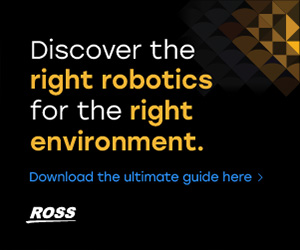Dak’s Take: NextGen TV’s real problem is nobody knows the ‘why’

Weekly insights on the technology, production and business decisions shaping media and broadcast. No paywall. Independent coverage. Unsubscribe anytime.
Remember when HD television launched? Broadcasters couldn’t stop talking about it… Every local newscast reminded you that they were broadcasting in high definition and how their competitor was not. Station logos were modified, slapping the HD icon atop. Opens proudly proclaimed this newscast was in HD.
The message was simple: this looks better, and you want it.
Take WNBC’s 2006 promo, which touted its status as home to New York’s first live Doppler radar and first daily news helicopter before triumphantly declaring it was “the first and only station to bring you the news in high definition.”
The tagline said, “it’s news like you’ve never seen it before.”
That’s how you sell a technology upgrade. You show it, you brag about it, you make viewers feel like they’re missing out if they don’t have it.
Now here we are with ATSC 3.0 — technology set to unlock new ways of delivering content like the HD transition — and broadcasters have gone mysteriously silent.
According to data from Pearl TV (the consortium pushing NextGen TV), only 15 million ATSC 3.0-enabled televisions have been distributed cumulatively, with the Consumer Technology Association forecasting just 5 million more units shipping in 2025. That’s a pittance in a nation of 125 million television households.
Why? Because instead of selling the benefits, they’re too busy building walls and carving out their plots of land.
The FCC has voted to clear regulatory roadblocks for ATSC 3.0, with Chairman Brendan Carr emphasizing that “local broadcasters have unique insights into what works best in their communities” and that the new rules “will put more power and flexibility into the hands of those broadcasters.” But flexibility means nothing when you’ve forgotten the first rule of technology adoption… tell people why they should give a damn.
Let’s talk about what should have been straightforward.
ATSC 3.0 promises 4K Ultra HD with HDR, immersive Dolby Audio, improved signal strength in dense cities and rural areas and interactive features that make traditional TV feel more like streaming. Add in dynamic ad insertion, programmatic integration and the ability to turn television towers into regional data delivery networks, and you’ve got technology that should have broadcasters celebrating (horray for new monetization models!).
Instead, they’re begging the FCC to force the tech into television sets.
While the RTDNA/Syracuse survey shows 32.6% of news directors are doing something with AI (up from 26.6%), NextGen TV adoption has actually dropped — just 18.3% of TV news directors reported doing “something” with NextGen TV, down from 20.9% last year and 25% the year before. That’s not a transition.
Part of this is due to the back-and-forth over DRM and the future of “public airwaves.”
While good data on this subject is scarce, Rabbit Ears has compiled a list of stations with DRM enabled on ATSC 3.0 feeds, and it’s hitting more than you might expect. North of 75% of markets with ATSC 3.0.
Right now, you could spend between $100 and $300 on TV hardware that supports ATSC 3.0, and you might be shut out of channels you can easily get with ATSC 1.0 without knowing why.
Let’s go back to the original language about NextGen TV… the Commission anticipated that programming would be “received by all members of the public” and would “not require a private contractual agreement between the broadcaster and the viewers,” and that “ATSC 3.0 transmissions will be receivable eventually on conventional television sets.”
Think about that for a second.
What actually needs to happen
First, let’s acknowledge the obvious: As competitive pressures mount from streaming services and other platforms, completing the transition to ATSC 3.0 has become essential for the industry’s future… or at least NAB thinks so.
But essential doesn’t mean inevitable, especially when you’re actively driving away your audience.
NAB wanted a hard deadline — Phase 1 would see stations in the top 55 markets transition fully to ATSC 3.0 by February 2028, with remaining markets completing their transition by February 2030. But the FCC went a different direction. The commission’s approach differs markedly from NAB’s request for mandatory transition deadlines, instead opting for a voluntary approach that allows market forces and local conditions to drive adoption.
This might sound reasonable, but when low-cost TV makers tend to exclude ATSC 3.0 from their sets, and some bigger brands – including Samsung and LG – have either pulled back or stopped supporting the standard entirely, you’re left with a chicken-and-egg problem that voluntary transitions rarely solve.
Technology adoption isn’t about flexibility. It’s about making something so compelling that people want it.
The path forward on NextGen TV
Broadcasters need to ask themselves a fundamental question: Is ATSC 3.0 really about the future of local television, or is it about turning broadcast spectrum into a data delivery business?
The technology promises datacasting capabilities that could dwarf traditional TV revenue. Automotive updates, IoT networks, smart city infrastructure — suddenly your local NBC affiliate looks less like a TV station and more like a wireless data provider. Maybe that’s the real play here, and all this hand-wringing about consumer adoption is beside the point.
But if broadcasters care about television, they must start acting like it.
Picture personalized newscasts where viewers choose deeper dives on topics that matter to them. Imagine micro-local programming — high school football or civic meetings — available on-demand through NextGen’s IP infrastructure. Think about emergency alerts that don’t just tell you there’s a tornado warning but show you exactly where it is relative to your location.
The problem? Nobody knows about them.
While broadcasters obsess over encryption protocols and spectrum efficiency, they’ve forgotten the basics of technology adoption… show people why they should care.
Make ATSC 3.0 tuners affordable — subsidize them if necessary. Create demonstration channels that showcase what NextGen TV can actually do. Partner with local schools, governments and businesses to develop innovative content that couldn’t exist on traditional broadcast. Show people why 4K local content and interactive weather matter in their daily lives.
Most importantly, decide what business you’re actually in. If it’s datacasting, fine — but be honest about it. If it’s television, then start treating viewers like customers instead of afterthoughts.
ATSC 3.0 gives broadcasters unprecedented tools to reinvent local media. But reinvention requires more than technology. It requires vision, commitment, and actually understanding what your community needs.
Right now, broadcasters are failing on all three counts.
The FCC’s new flexibility is meaningless if broadcasters can’t articulate why NextGen TV matters to anyone outside a boardroom.
And with critics concerned that without a concerted push for affordability and awareness, the shift to NextGen TV could fracture access to a public resource millions still depend on, the industry is running out of time to get this right.
Want to know what comes next for ATSC 3.0? That depends entirely on whether broadcasters can remember they’re in the business of serving communities, not just monetizing spectrum. The technology is there. The regulatory support is there. The only question is whether broadcasters will use them to enhance local television or quietly pivot to becoming data utilities.







tags
Consumer Technology Association, Dak's Take, FCC, NAB, NextGen TV ATSC 3.0, Pearl TV
categories
NextGen TV, Voices